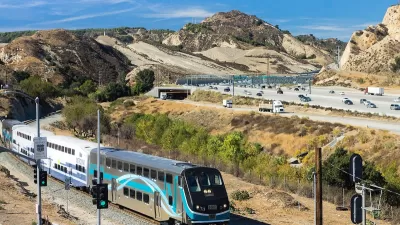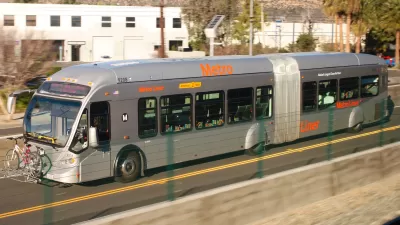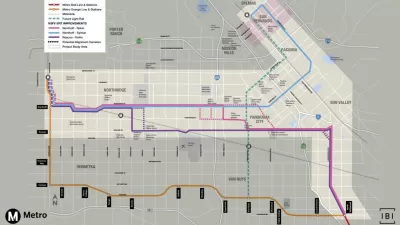The Warner Center 2035 Plan was designed to bring growth to Los Angeles’s San Fernando Valley. If the opening of a $350-million Westfield Village in September is any indication, it’s succeeding.
Los Angeles City Councilmember Bob Blumenfield, who ushered the plan to adoption in 2013, sees his role in this growth as that of a "closer"—working at the city and state levels to create opportunities for development, and then "getting out of the way."
"The biggest city financial tool is subvention," he explains. His own political work concerning subvention moved Westfield’s opening date up by 10 years. Also useful has been the Local Development Corporation (LDC), a fund of mobility fees paid by new developments. Blumenfield is working on a framework for an entity to expend the funds, which are growing as development heats up in the area.
The Warner Center plan addresses a problem all too well known to planners and developers in Los Angeles:
"Previously, the area saw hodgepodge development—wherein everything came to the Council and needed a variance, and every issue was a fight. The plan creates a smoother path… It’s a plan that’s truly a plan."
It also shifts planning away from another quintessential Los Angeles issue: cars. The Valley is notorious for lacking public transportation options, so Blumenfield is working to get Metro to invest in transit capacity. That expectation is baked into the plan:
"The Warner Center 2035 Plan also relies on us thinking differently and not assuming that we have to drive everywhere. The plan envisions more pedestrian-friendly and more bike-friendly development. If you can live, work, and play in an area, you don’t have to get in your car every time."
Blumenfield’s experience with financing tools predates his tenure in the city council. As a state senator, he authored two bills aimed at reforming California Redevelopment Agencies. The full interview in The Planning Report explains how that effort ended with CRAs being eliminated altogether.
FULL STORY: Blumenfield Proud of Warner Center 2035's Blueprint for Growth

Montreal Mall to Become 6,000 Housing Units
Place Versailles will be transformed into a mixed-use complex over the next 25 years.

Planetizen Federal Action Tracker
A weekly monitor of how Trump’s orders and actions are impacting planners and planning in America.

DARTSpace Platform Streamlines Dallas TOD Application Process
The Dallas transit agency hopes a shorter permitting timeline will boost transit-oriented development around rail stations.

Without International Immigrants, the Rural US Population Would Be Falling 58%
Census data shows that population growth in rural areas is due in large part to international migrants.

Dead End: Nine Highways Ready for Retirement
The Freeways Without Futures report describes the nation’s most promising highway removal proposals.

Congressman Proposes Bill to Rename DC Metro “Trump Train”
The Make Autorail Great Again Act would withhold federal funding to the system until the Washington Metropolitan Area Transit Authority (WMATA), rebrands as the Washington Metropolitan Authority for Greater Access (WMAGA).
Urban Design for Planners 1: Software Tools
This six-course series explores essential urban design concepts using open source software and equips planners with the tools they need to participate fully in the urban design process.
Planning for Universal Design
Learn the tools for implementing Universal Design in planning regulations.
City of Mt Shasta
City of Camden Redevelopment Agency
City of Astoria
Transportation Research & Education Center (TREC) at Portland State University
City of Camden Redevelopment Agency
Municipality of Princeton (NJ)
Regional Transportation Commission of Southern Nevada





























